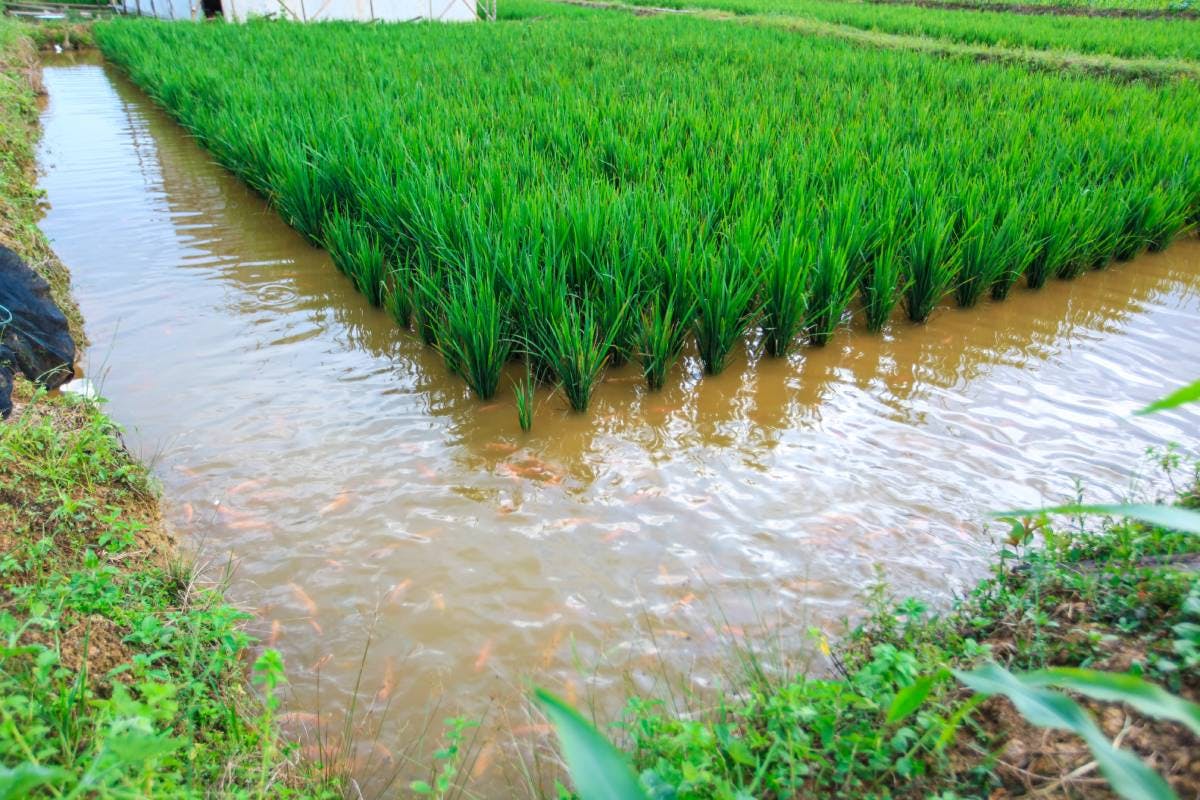The ancient tradition of rice fishing has multiple modern benefits
Cultivating rice and aquatic animals together is an ancient practice thought to be over 2,000 years old. Research published in eLife science journal finds that this method increases yields and reduces the need for environmentally harmful chemicals.
The timeless tradition of rice fishing
Known as rice fishing, or a rice-fish system, the technique integrates rice agriculture with aquaculture, most commonly with freshwater fish but also crabs, crayfish, and turtles. It is a tradition passed down from generations in countries such as India, Thailand, northern Vietnam, and southern China.
The design involves constructing channels within the rice field before harvest to allow water flow and introducing aquatic life into these channels and the field itself. After the rice is harvested, the remaining stubble and water create an ideal environment for fish cultivation, with the channels acting as refuges during the dry season. Additional feed can be provided to maximize fish growth at this stage.
Before the next planting season, the field is re-flooded, reconnecting the channels to the water source and allowing the fish population to repopulate the entire field, continuing the integrated cycle.
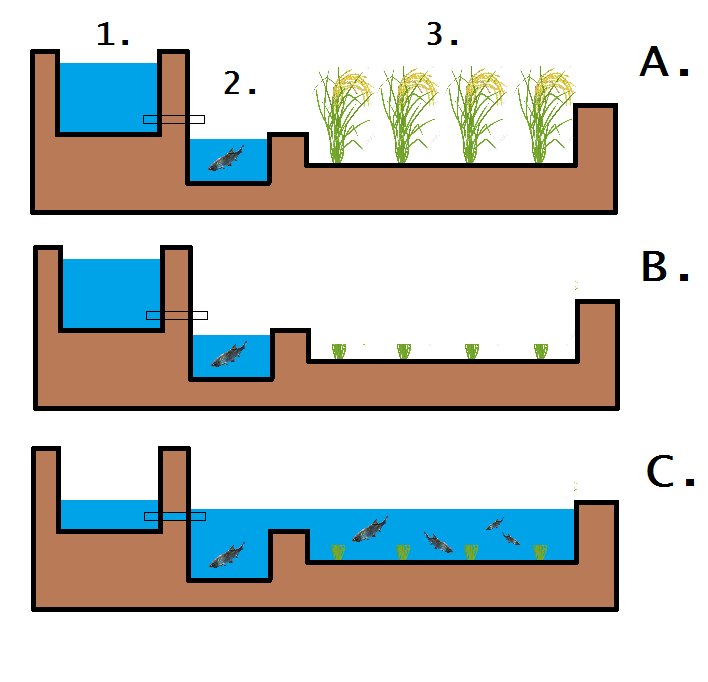
Design of a rice-fish system with channels. A: Before harvest B: After harvest C: Re-flooding. Image credit: Kiss Veronika, CC BY-SA 4.0
Ecological harmony increases yields
Researchers from eLife, a nonprofit peer-reviewed open-access scientific journal, spent four years studying Chinese rice paddies. Their experiment examined plots of rice that contained fish, turtles, and crustaceans and compared them to rice fields with none of these animals.
In the paddies with marine species, the researchers found that rice yields were up to 12% higher than yields without aquatic life. The fields filled with fish were also less plagued by invasive vegetation, weeds, and pests, thus decreasing the need for chemical pesticides.
Benefits also include enhanced soil and pest control
The rice-fish plots also had significantly more nitrogen-efficient soil, breaking down organic matter at a measurably higher rate. This nutrient boost reduces the need for growers to use synthetic fertilizers on their paddies.
All these benefits result from the symbiotic relationship between rice plants and marine species. The rice paddies provide the animals with shelter and shade, which reduces water temperature, creating a more suitable habitat. Fish, crabs, and turtles can also find bountiful food sources through the insects and vegetation that live in the fields.
With this diet, fish remove pests, diseases, and weeds. By controlling invasive species, the competition for nutrients is decreased, so more nutrients are available for the rice. In addition, the waste produced by the marine animals is a rich source of natural fertilizer for the rice plants, supporting their growth and increasing their yields.
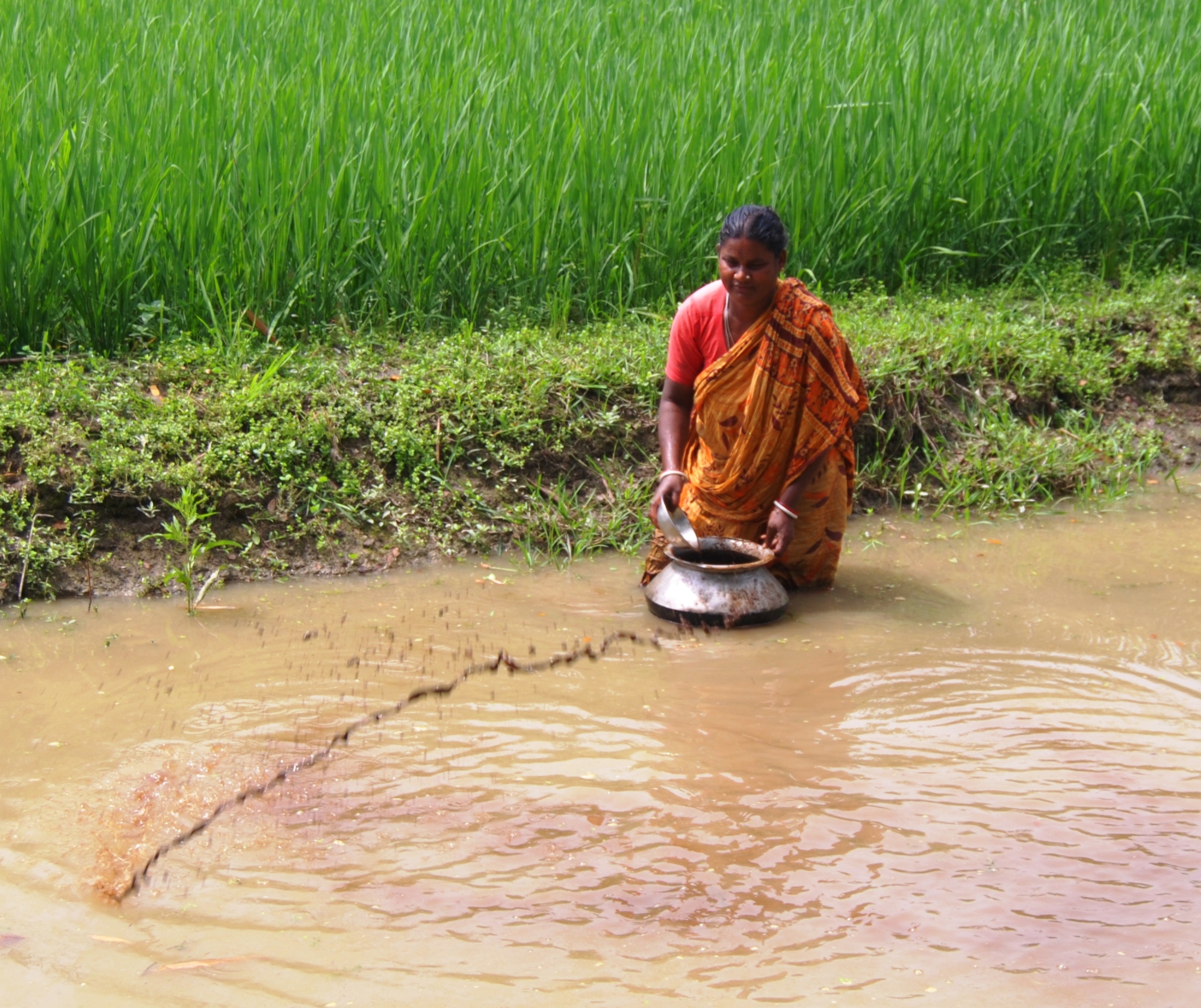
While fish get plenty to eat naturally in rice fields, additional feed can be provided to maximize fish growth. Image Credit: WorldFish, Flickr.
Combating monoculture's drawbacks
While rice farmers in Southeast Asia have known about the value of diversity in farming for centuries, the practice is losing ground to the more globalized food system technique of monoculture, growing one crop species in a field at a time.
Monoculture has a destructive impact on soil, as the lack of biodiversity creates a lack of nutrients, increasing the need for chemical fertilizers and pesticides. There is also no protection from erosion by natural elements such as wind or rain when the soil is depleted of minerals, making this technique unsustainable and more susceptible to the negative impacts of climate change.
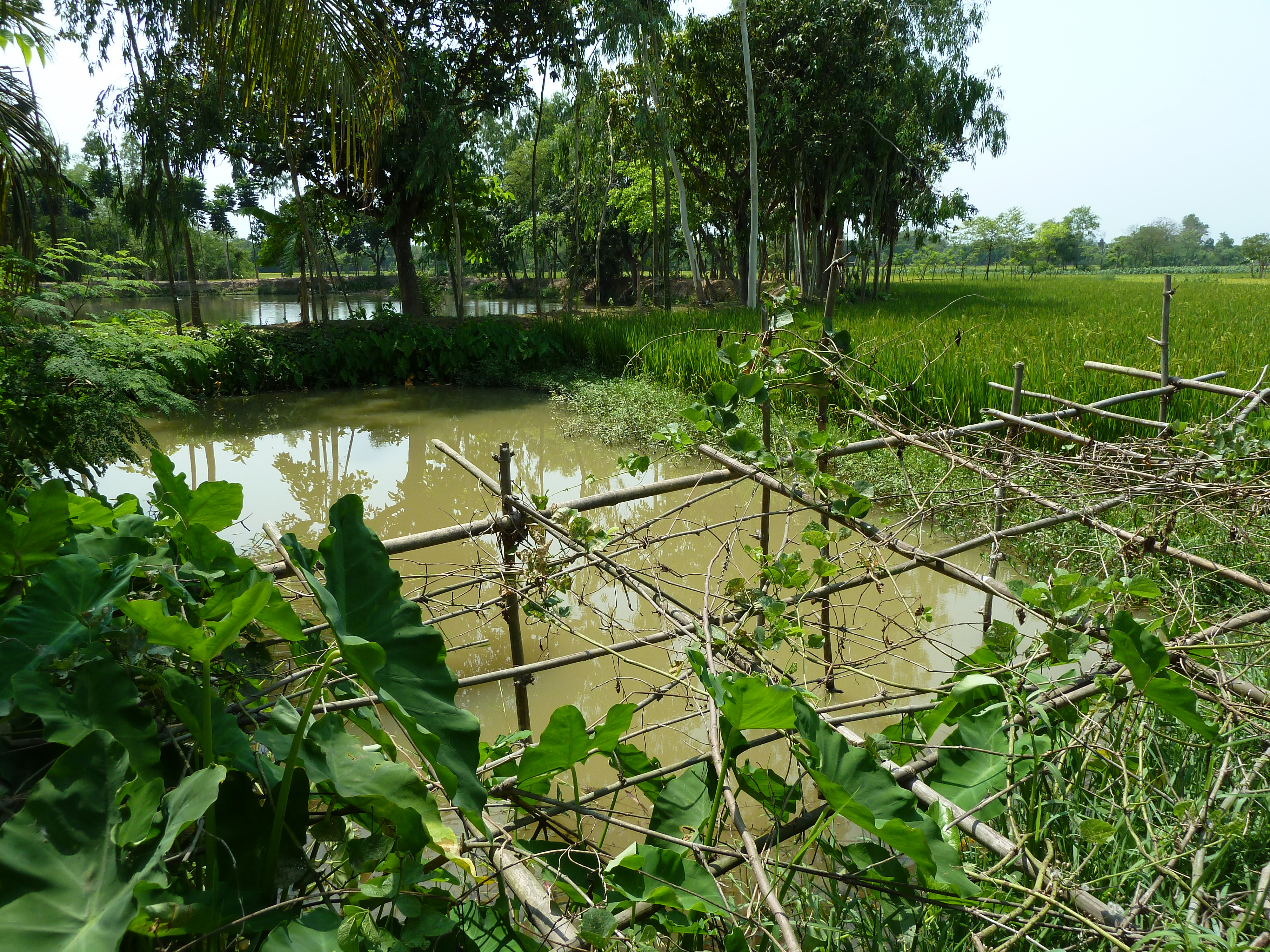
Rice-fish farming in the Joypurhat district, Bangladesh. Image Credit: Anne Delaporte, Flickr.
A sustainable future through regenerative agriculture
Scientific research spearheaded by One Earth has found three pillars of action needed to limit the global average temperature rise to 1.5°C. These are a shift to 100% renewable energy by 2050, protection and restoration of half of the world’s lands and oceans, and a transition to regenerative, climate-friendly agriculture.
Combining rice paddies and aquatic life is one such method of sustainable agriculture. The researchers hope their work builds the scientific case for why this age-old growing practice helps nature, farmers, and, ultimately, our planet.
Explore how regenerative agriculture can help solve the climate crisisYou might also like
-
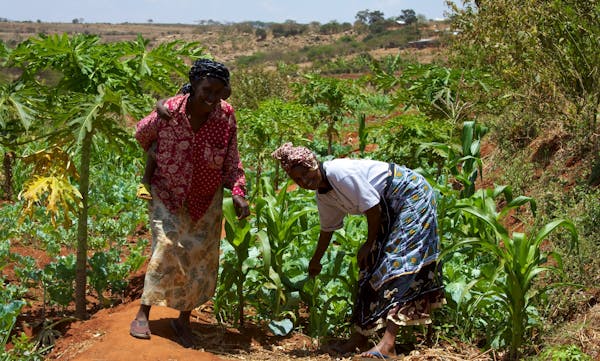
Why smallholder farmers are key to scaling regenerative agriculture: 10 case studies
More than 15 million small farmers are already benefiting and even thriving from adopting the climate-beneficial practices of regenerative agriculture. As these diverse cases illustrate, its techniques spread spontaneously among farmers as they become empowered by success.
-
.jpg?auto=compress%2Cformat&h=600&w=600)
Why is inorganic fertilizer so bad for the climate?
Inorganic fertilizers reduce soil carbon and increase harmful nitrous oxide emissions, but proper management can rejuvenate soils.
